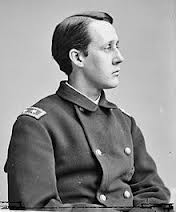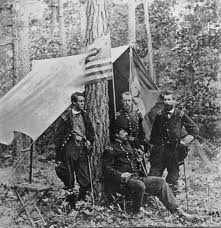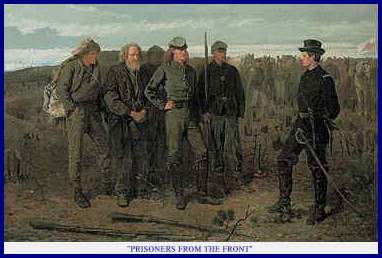 Barlow Boy General, was the perfect example of a fearless commanding officer that could be Beardless Yet Brave. The comparison between three known Boy Generals is like night and day. George Armstrong Custer and George B. McClellan were flamboyant, self-centered and vain. Francis C. Barlow was modest, benevolent, honest and could care less about the pomp and accoutrements of command. Barlow was most comfortable in a checkered flannel shirt, underneath his open uniform coat. Unlike most officers of the Civil War, Barlow was clean-shaven and kept his hair short and well-trimmed. This Union Officer led from the front, was always in the thick of battle, inspired his men and was one of the few Federal enlistees to advance from Private to General Officer during the Civil War.
Barlow Boy General, was the perfect example of a fearless commanding officer that could be Beardless Yet Brave. The comparison between three known Boy Generals is like night and day. George Armstrong Custer and George B. McClellan were flamboyant, self-centered and vain. Francis C. Barlow was modest, benevolent, honest and could care less about the pomp and accoutrements of command. Barlow was most comfortable in a checkered flannel shirt, underneath his open uniform coat. Unlike most officers of the Civil War, Barlow was clean-shaven and kept his hair short and well-trimmed. This Union Officer led from the front, was always in the thick of battle, inspired his men and was one of the few Federal enlistees to advance from Private to General Officer during the Civil War.
Francis Channing Barlow, born in 1834, was raised in Massachusetts. Barlow studied law and graduated from Harvard, first in his class, in 1855. He practiced law in New York and did some editorial work at the New York Tribune. In April of 1861, when the Civil War broke out, he enlisted as a Private in the 12th New York, on a three-month tour, was appointed a First Lieutenant on May 1st and mustered out of the 12th, on August 1, 1861.
Barlow re-enlisted in November of 1861, in the newly formed 61st New York Infantry and was appointed a Lieutenant Colonel and second in command of the regiment. He soon attained command and the 61st New York served with distinction under General McClellan’s undistinguished, unsuccessful and incompetent Peninsula Campaign of 1862.
 While missing Second Bull run, the 61st was in the middle of the carnage at Antietam
While missing Second Bull run, the 61st was in the middle of the carnage at Antietam
and Barlow devised a brilliant flanking maneuver of the Confederate force defending the famous “Sunken Road.” In the course of this action Barlow was severely wounded and was forced to leave the Army until the following year. He was promoted to Brigadier General soon after the battle. Brigadier General John C. Caldwell wrote in his Official Report on The Battle of Antietam, regarding Barlow’s performance,
“What ever praise is due to the most distinguished bravery, the utmost coolness and quickness of perception, the greatest promptitude and skill of handling troops under fire, is justly due to him. It is but simple justice to say that he has proved himself fully equal to every emergency, and I have no doubt that he would discharge the duties of a much higher command with honor to himself and benefit to the country.”
In July of 1863, Barlow commanded a division of the 11th Corps at Gettysburg which delayed the Confederates long enough to enable the Union Army to reinforce the position. Again, Barlow was severely wounded and his statue now stands on “Barlow’s Knoll.”
 Barlow survived his Gettysburg wounds and returned to service in the Spring of 1864 as commander of the First Division of General Hancock’s Second Corps. Brigadier General Barlow led his division in the Wilderness, the attack at the salient at Spotsylvania and the charge at Cold Harbor.
Barlow survived his Gettysburg wounds and returned to service in the Spring of 1864 as commander of the First Division of General Hancock’s Second Corps. Brigadier General Barlow led his division in the Wilderness, the attack at the salient at Spotsylvania and the charge at Cold Harbor.
General Barlow led his troops for a short period during the Siege of Petersburg, but due to never fully recovering from his prior wounds, he received an extended medical leave and didn’t return to active duty until April of 1865.
Barlow Boy General, was the exception, rather than the rule, a fearless, honorable and trustworthy young man, who commanded respect and it just goes to show, that Generals can be Beardless Yet Brave.
Bummer


And another connection to the rough-and-tumble world of New York newspapers – probably toughened him up for war.
Louis,
Wars are won with leaders like Barlow, given an objective and did what had to be done. Wounded or not he led and inspired. His honesty was his most impressive trait. His civilian life proves that he was beyond principled.
Bummer